 From June through August, this small city becomes one of the most famous seaside resorts in Italy. There are literally hundreds of hotels and hundreds of bars and discos. The beach is 15km (9 miles) long and filled with possibly 9,000 beach chairs and umbrellas and 900 volleyball courts.
From June through August, this small city becomes one of the most famous seaside resorts in Italy. There are literally hundreds of hotels and hundreds of bars and discos. The beach is 15km (9 miles) long and filled with possibly 9,000 beach chairs and umbrellas and 900 volleyball courts.
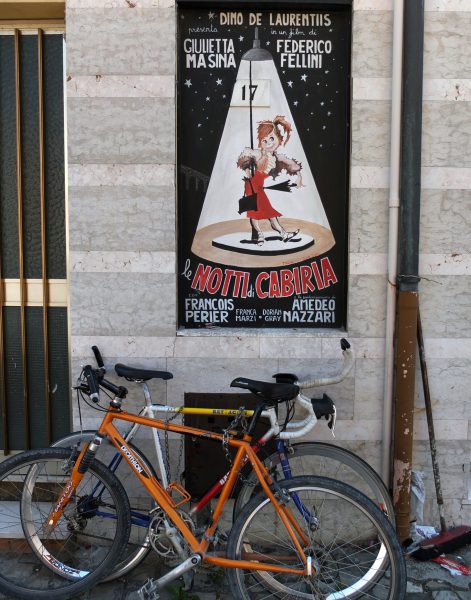 If you think about it, it’s the perfect place to give birth to Federico Fellini. He was born here in 1920. In 1973, his film Amacord was a semi biographical coming of age story that he fondly referred to as Italy’s lapse of conscience. The title “Amacord” is a Romagna dialect for “I remember”. The airport, by the way, small as it is, is named the Federico Fellini airport.
If you think about it, it’s the perfect place to give birth to Federico Fellini. He was born here in 1920. In 1973, his film Amacord was a semi biographical coming of age story that he fondly referred to as Italy’s lapse of conscience. The title “Amacord” is a Romagna dialect for “I remember”. The airport, by the way, small as it is, is named the Federico Fellini airport.
Being such an international hot spot, it’s filled with summer activities ranging from sailing regattas, the Rimini Jazz festival, the Riviera della Mode fashion show and the 100 day long summer festival of parties, dance clubs, fireworks and literally thousands of people on the beach. Our friend Maria Vittoria, who lives about 2 hours away in Emilia Romagna says she love the beach but would rather stay home than go to Rimini.
But this is September and most of the tourists are gone. The prices are about half of what they are during the high season and it’s actually kind of relaxing.
The beach might be the center of the modern city but there are a few wonderful reminders of the ancients. The Arch of Augustus (27 BC) signified the end of the via Flaminia that traveled from Rome over the Apennine Mountains to the Adriatic coast. These days you can take the A14 to the A24 and get there in under 4hrs.
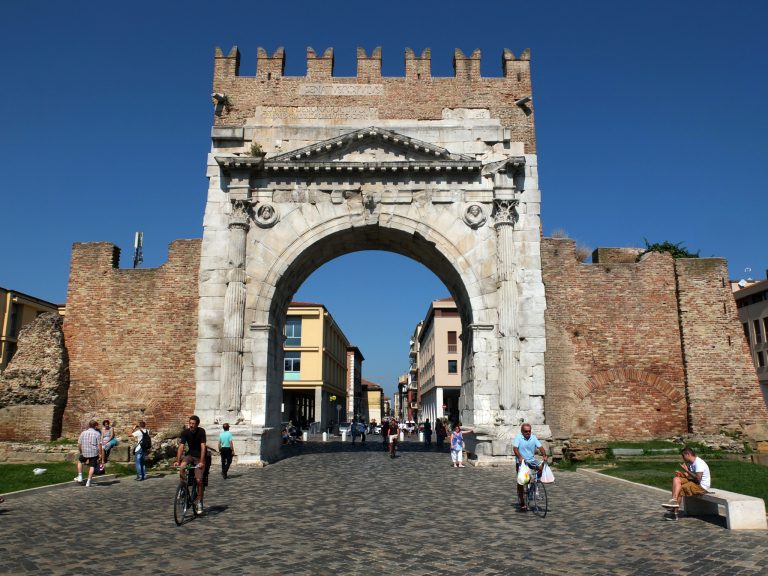 The Arch is a wonderful example of 1st century Roman Architecture, even if it is buried inside a crenellated brick reinforcement most likely built hundreds of years later. The Arch leads into the Piazza Tre Martiri which was once the Piazza Giulio Cesare. According to legend, Caesar stopped here a couple of days after he crossed the Rubicon and started a civil war. According to legend, he assembled his troops in this Piazza and gave the speech that the “die is cast, there is no turning back.”
The Arch is a wonderful example of 1st century Roman Architecture, even if it is buried inside a crenellated brick reinforcement most likely built hundreds of years later. The Arch leads into the Piazza Tre Martiri which was once the Piazza Giulio Cesare. According to legend, Caesar stopped here a couple of days after he crossed the Rubicon and started a civil war. According to legend, he assembled his troops in this Piazza and gave the speech that the “die is cast, there is no turning back.”
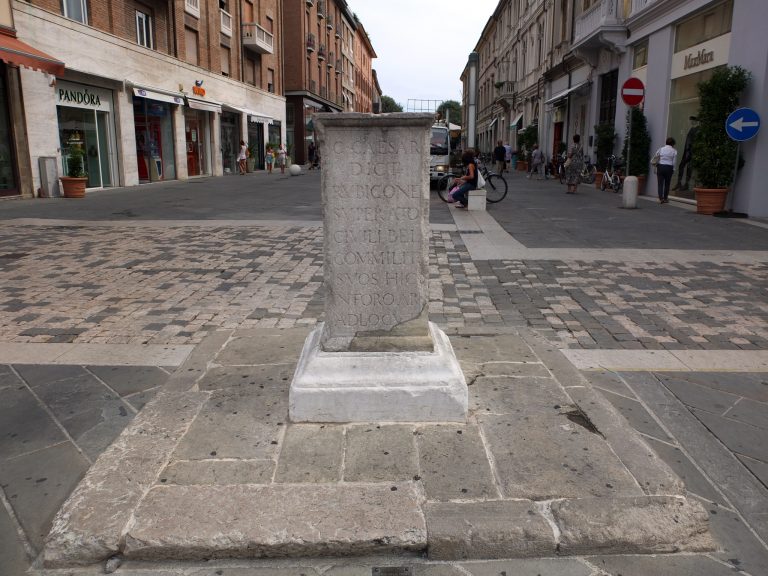 The pedestal of Caesar’s statue remains in the center of the square but Caesar was moved off to one side when the Piazza was renamed “Tre Martiri”. In 1944, Mario Cappelli, Luigi Nicolo and Adelio Pagliarani were hanged in the square for their attempt to sabotage a threshing machine used to harvest grain for the Nazi soldiers.
The pedestal of Caesar’s statue remains in the center of the square but Caesar was moved off to one side when the Piazza was renamed “Tre Martiri”. In 1944, Mario Cappelli, Luigi Nicolo and Adelio Pagliarani were hanged in the square for their attempt to sabotage a threshing machine used to harvest grain for the Nazi soldiers.
The Tre Martiri is the real center of the city and the exact location of the main roads of the ancient Roman city, the Cardo and the Decumanus. A bit further down the Decumanus is the early 1st century BC Porta Montanara. It predates all the other Roman ruins of the city although it was taken down from it’s original location and resurrected in it’s current location.
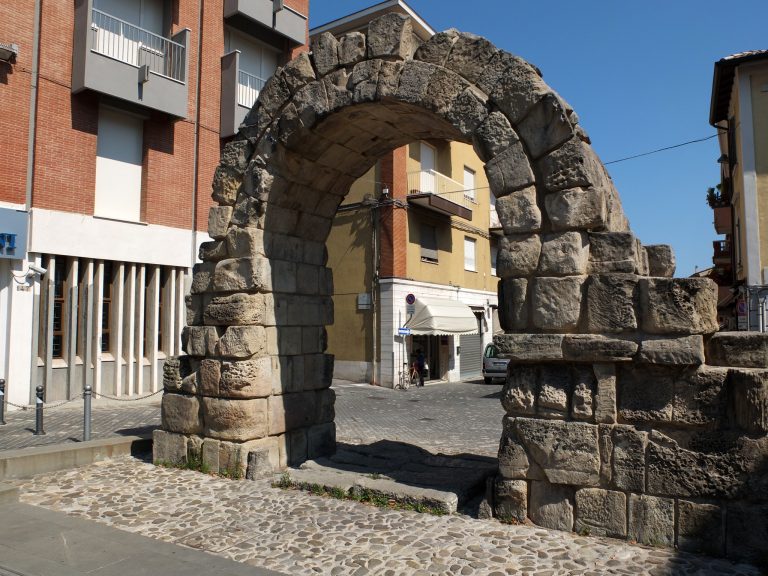 Porta Montanara was built by the followers of Gaius Marius during his war against Lucius Felix Sulla. Sulla’s rise to power is a great story and well worthy of a historical film or cable history series.
Porta Montanara was built by the followers of Gaius Marius during his war against Lucius Felix Sulla. Sulla’s rise to power is a great story and well worthy of a historical film or cable history series.
Sulla came from a poor family to become the first Dictator of Rome. He was handsome, a great soldier, a protector of the poor, a lover of prostitutes and a life filled with great adventures.
 Following the Cardo across one of the rivers that flowed into the Adriatic is the other of the great Roman treasures of Rimini, the 5 semicircle arches of the beautiful Tiberius Bridge. The construction of bridge started around 14AD during the reign of Augustus but it wasn’t finished till 20AD by Tiberius. Augustus died in 14 AD, probably close to the time the work on the bridge began.
Following the Cardo across one of the rivers that flowed into the Adriatic is the other of the great Roman treasures of Rimini, the 5 semicircle arches of the beautiful Tiberius Bridge. The construction of bridge started around 14AD during the reign of Augustus but it wasn’t finished till 20AD by Tiberius. Augustus died in 14 AD, probably close to the time the work on the bridge began.
This bridge is almost 2,000 years old and lots of 4,000-5,000 pound cars drive over it every day of the year. Now that’s engineering.
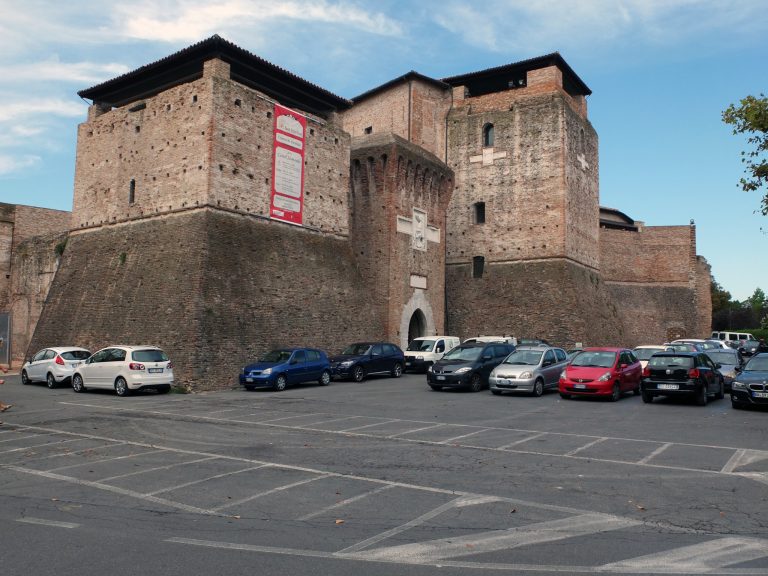 Castle Sigismondo is also in the center of town. This is the family castle of the Malatesta family. In the 13th century the Guelph (supporter of the Pope) Malatesta da Verucchio made himself the feudal lord of the Rimini after he tossed out the Ghibellines (supporters of the Holy Roman Emperor) in 1295. Those were the good years. In the 15th century Sigismondo Pandolfo Malatesta was excommunicated from the church in 1460 by the Pope Pius II due to his long running feud with the Duke of Urbino, Federico III da Montefeltro.
Castle Sigismondo is also in the center of town. This is the family castle of the Malatesta family. In the 13th century the Guelph (supporter of the Pope) Malatesta da Verucchio made himself the feudal lord of the Rimini after he tossed out the Ghibellines (supporters of the Holy Roman Emperor) in 1295. Those were the good years. In the 15th century Sigismondo Pandolfo Malatesta was excommunicated from the church in 1460 by the Pope Pius II due to his long running feud with the Duke of Urbino, Federico III da Montefeltro.
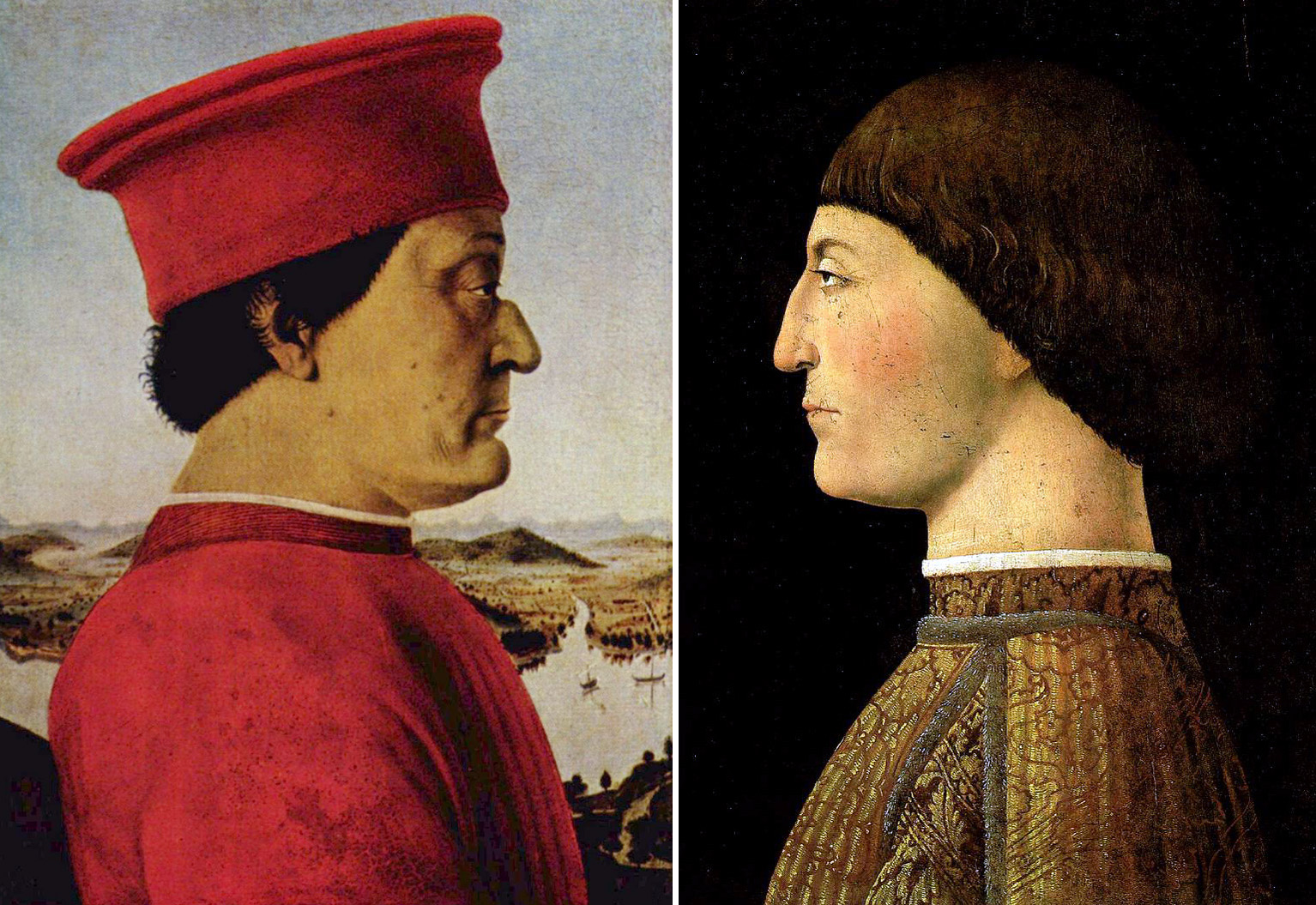 Both Sigi and Federico are two of the most famous portraits by Piero della Francesca.
Both Sigi and Federico are two of the most famous portraits by Piero della Francesca.
The Malatesta family is much more famous for the story of Paolo and Francesca, the eternally damned lovers of Italian lore who ended up in the 2nd circle of Dante’s Inferno. The 2nd circle is reserved for those poor souls who gave into lust. Here was Cleopatra, Helen of Troy and Paris, Dido the Queen of Carthage who fell in love with Aeneas and Tristan, Knight of the Round Table who is sent to bring back Isolde to marry his King but falls in love with her himself.
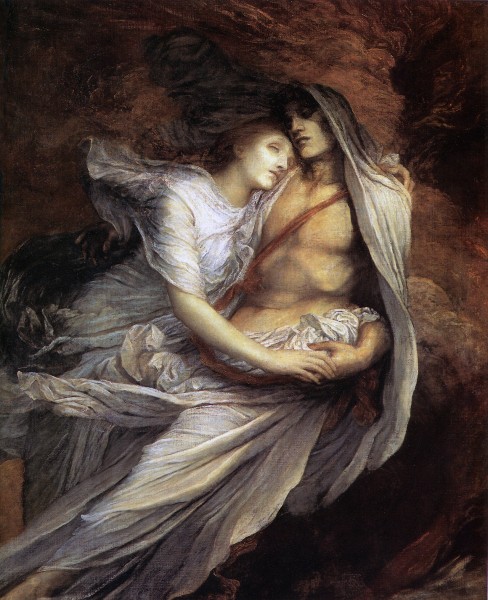 Here’s the story. The handsome Paolo Malatesta was sent as a messenger to ask for the hand of the beautiful Francesca for the brutish and deformed Giovanni (Gianciotto the Lame) Malatesta, but something happened in the translation. Francesca did marry Giovanni but she fell in love with Paolo and even though Paolo was already married to Oribile Beatrice (yes, her name was horrible Beatrice), they carried on the affair for 10 years before Giovanni caught them in Francesca’s bedroom. Giovanni lunged at Paolo with his sword but Francesca stepped in between them and was killed instantly. Now totally incensed, Giovanni killed his brother as well.
Here’s the story. The handsome Paolo Malatesta was sent as a messenger to ask for the hand of the beautiful Francesca for the brutish and deformed Giovanni (Gianciotto the Lame) Malatesta, but something happened in the translation. Francesca did marry Giovanni but she fell in love with Paolo and even though Paolo was already married to Oribile Beatrice (yes, her name was horrible Beatrice), they carried on the affair for 10 years before Giovanni caught them in Francesca’s bedroom. Giovanni lunged at Paolo with his sword but Francesca stepped in between them and was killed instantly. Now totally incensed, Giovanni killed his brother as well.
The whole sad event is written in the Canto V of Dante’s Divine Comedy where Francesca recounts the story to Dante of how they fell in love after reading the sad tale of Lancelot and Guinevere. “nessun maggior dolore che ricordarsi del tempo felice ne la miseria” There is no greater sorrow than to know happiness in the time of misery. Francesca da Polenta, by the way, was known by Dante during his life. When Dante was run out of Florence for political reasons, he was given refuge in Ravenna by the da Polenta family. Dante’s grave is in Ravenna.
In 1437, Sigismondo Pandolfo Malatesta started the construction of his Castel Sigismondo. According to some reports he designed it himself, which might have been why it took 15 years to build it. Filippo Brunelleschi, the architect of the Duomo of Florence, consulted on the Castle design in 1438 but he probably didn’t add too much.
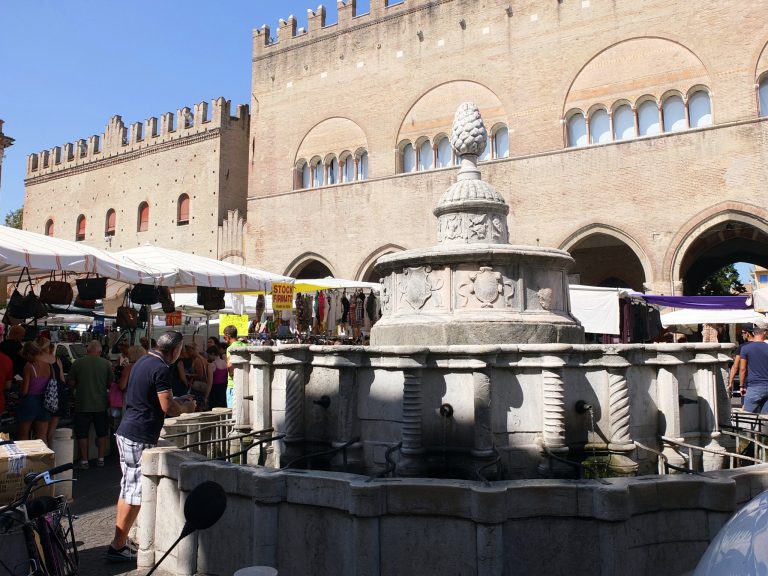 These days, the Castle Sigismondo serves as a backdrop to a great parking lot and weekly street market that empties into the Venetian Piazza del Popolo where Leonardo Da Vinci once remarked on the local laundry fountain still a landmark in the square.
These days, the Castle Sigismondo serves as a backdrop to a great parking lot and weekly street market that empties into the Venetian Piazza del Popolo where Leonardo Da Vinci once remarked on the local laundry fountain still a landmark in the square.
Piazza del Popolo is a short hop to the Borgo San Giuliano, the hip place for a great seafood dinner where even if you know how to read an Italian menu, guess again. The local names will definitely confuse you.
For more photos of Rimini click here.
You must be logged in to post a comment.